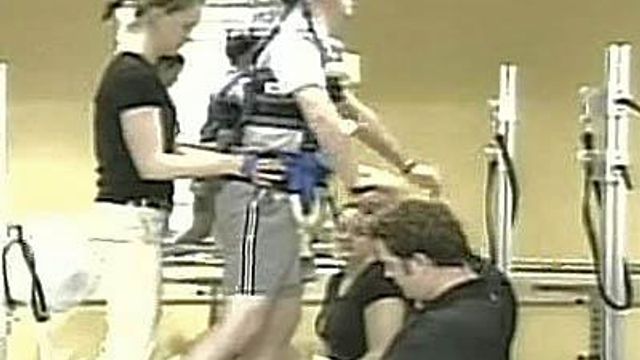Therapy Helps Retrain Damaged Spinal Cord
For people who are partially paralyzed, treatment options are limited. But an intensive new therapy is getting some of these patients back on their feet.
Posted — UpdatedSpinal cord damage disrupts the travel of messages from the brain to the legs and feet. So, physicians are using a locomotor therapy to retrain the body, hoping that repetition will help the spinal cord to remember how to function.
"We believe that the stepping reflex is actually held through the cord, and so we're really retraining the spinal cord," said Dr. Steve Williams, chief of rehabilitative medicine at Boston Medical Center.
A trial sponsored by the Centers for Disease Control and Prevention and the Christopher and Dana Reeve Foundation is designed to show that the therapy is cost-effective. Sixty therapy sessions can cost up to $50,000.
"One of the problems that many spinal cord injury patients face is a bed sore or an ulcer, and the studies have shown to heal a single bed sore can cost $100,000," Williams said. "So, if people can walk, they have no risk of bed sores."
Bob Konieczko has been mostly confined to a wheelchair for the past three years after falling off a roof. The therapy program is helping him to learn to walk again.
"(I'm) regaining the strength in my mid-section, which is the important part here. So (it's) very, very steady, slow progress," Konieczko said. "My stamina is a lot better."
"I don't walk with a walker anymore. I use the crutches, and my distance has almost doubled as far as I can walk," said Rich Maloney, another patient in the therapy trial.
• Credits
Copyright 2024 by Capitol Broadcasting Company. All rights reserved. This material may not be published, broadcast, rewritten or redistributed.





